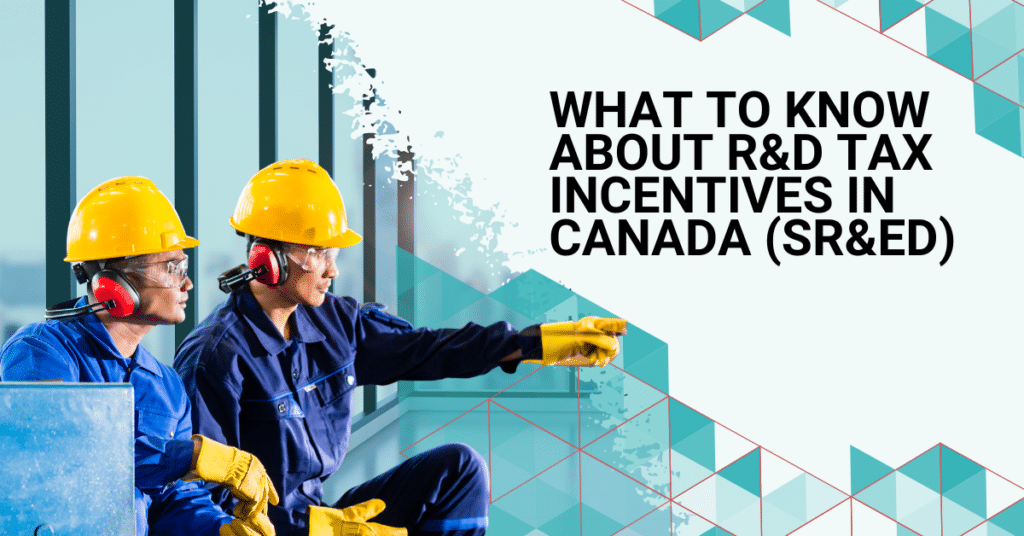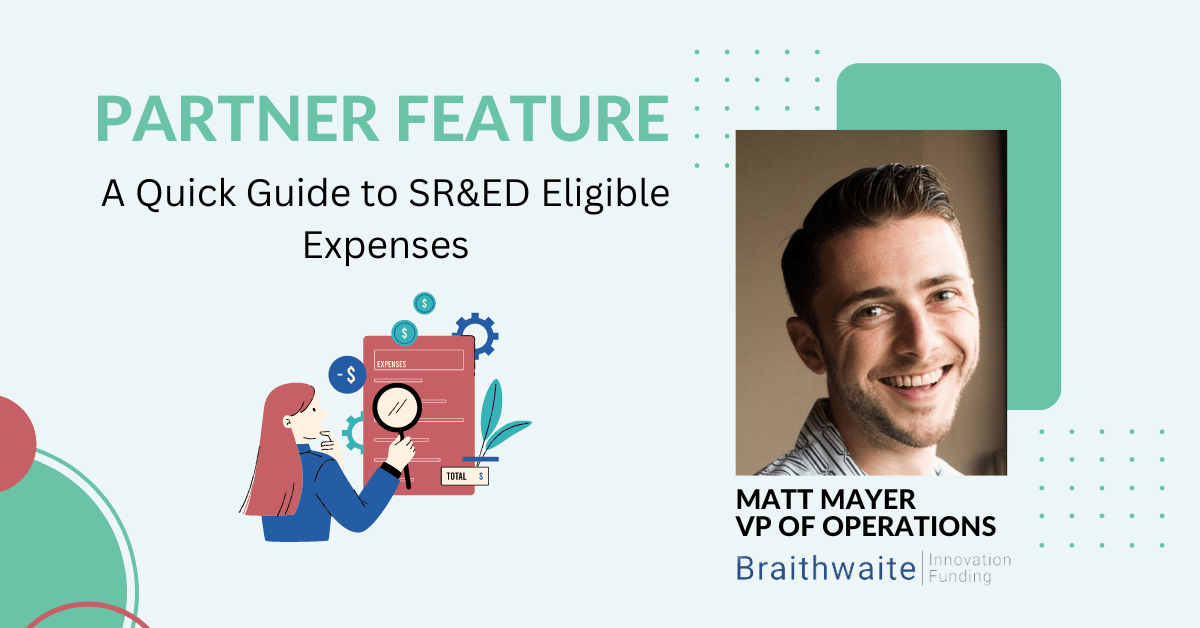For Canadian businesses pursuing innovation and technological advancement, having access to reliable funding is critical when it comes to supporting your research and development (R&D) efforts. With the cost of materials and services rising, innovators face new challenges that demand extra capital, and knowing how to best increase your capital pool is essential to keeping up your momentum.
In a bid to help alleviate some of the financial strain that comes with R&D projects, the Canadian government offers generous tax incentives in the form of the Scientific Research and Experimental Development (SR&ED) program. The SR&ED program is the government’s largest incentive program for those pursuing R&D, and eligible businesses can greatly benefit from taking advantage of the tax credits offered and furthermore, financing those credits as an interim solution until the refund arrives.
Below, we’ll take a closer look at some of the specifics of the SR&ED program and the benefits of partnering with a lender like Venbridge. Read on to learn more.
What is SR&ED?
The Scientific Research and Experimental Development program is a government initiative that aims to promote scientific and technological advancements within Canada. It offers tax credits to businesses nationwide that conduct eligible R&D activities, allowing them to reduce their taxes owing or even receive refunds.
Eligibility Criteria
To be eligible for SR&ED tax credits, filers must fulfill certain requirements that ensure that all funding directly supports projects that advance scientific or technological knowledge and involve a systematic investigation or process. Projects must embody some degree of technological uncertainty (meaning the result/conclusion is not easily assumed or currently known), and businesses must demonstrate that they encountered and overcame obstacles through a systematic approach. Eligible activities can include experimental development, applied research, and basic research.
What Qualifies?
The SR&ED program offers tax credits for various expenditures directly related to research and development activities. Key qualifying expenditures include:
Salaries and Contractor Expenses:
You may claim the salaries of employees directly involved in carrying out eligible R&D activities. Eligible employees include researchers and scientists, technicians, engineers, programmers, and other personnel directly contributing to the project. The amount eligible for tax incentives for an employee’s salary or wage is calculated based on the proportion of their time dedicated to SR&ED activities. A portion of contractor fees that are directly involved in eligible R&D projects also provide tax credits under the SR&ED program.
Materials and Supplies
Costs associated with materials and supplies used in R&D projects may also qualify for tax incentives through the SR&ED program. This includes the purchase of consumables, prototypes, laboratory equipment, and other specialized tools required for experimentation and development. To claim such costs, companies must keep track of these materials and supplies and provide supporting documentation for their eligibility.
Overhead Expenses
Overhead expenses directly related to the R&D project may be eligible to be claimed. Related costs include utilities, rent, maintenance, and other operational expenses incurred during the course of the R&D activities. Your submitted documentation should allocate each expense proportionally to the R&D project and provide supporting documentation that establishes a direct relationship between the overhead expenses and the eligible activities.
And More. (See the complete list here)
Finessing Your Filing
Two things to keep in mind for strengthening your claim for SR&ED tax credits:
1. Record keeping and documentation
Maintaining detailed records and documentation is essential for a successful SR&ED claim. Businesses must keep track of the R&D activities, expenditures, and supporting evidence. Documents to keep and maintain include lab notes, project plans, and progress reports.
Proper documentation not only helps in preparing an accurate claim but can also help you prove your case should you ever be subject to an audit by the CRA.
2. Third-Party Consultants
Navigating the complexities of the SR&ED program can be daunting for businesses needing to focus the majority of their time on their R&D efforts. Often, partnering with a trusted consultant helps companies to stay on top of evolving program standards and strengthen each element of their claim for optimal results. Whether it’s your first time filing or you’re looking to get better results this time, consultants may be your secret weapon for success.
Financing Your SR&ED Tax Credits with Venbridge
The final aspect that filers should remember when pursuing SR&ED tax credits is that funding can take a considerable amount of time to arrive. Claims can take months to process and can only be submitted annually. For those needing funds now, the distance between expenditure and reimbursement can be dangerous. Partnering with a non-dilutive SR&ED financing firm like Venbridge removes much of the stress of long wait times and gives you access to capital in as little as two weeks. Venbridge has an extensive portfolio of previous success stories that span several industries. We are proud to partner with Canadian businesses like yours to help you achieve your full potential. Learn more about our lending options by contacting our team today!
Want to see how much SR&ED you may qualify for? Use our free online tool here!




